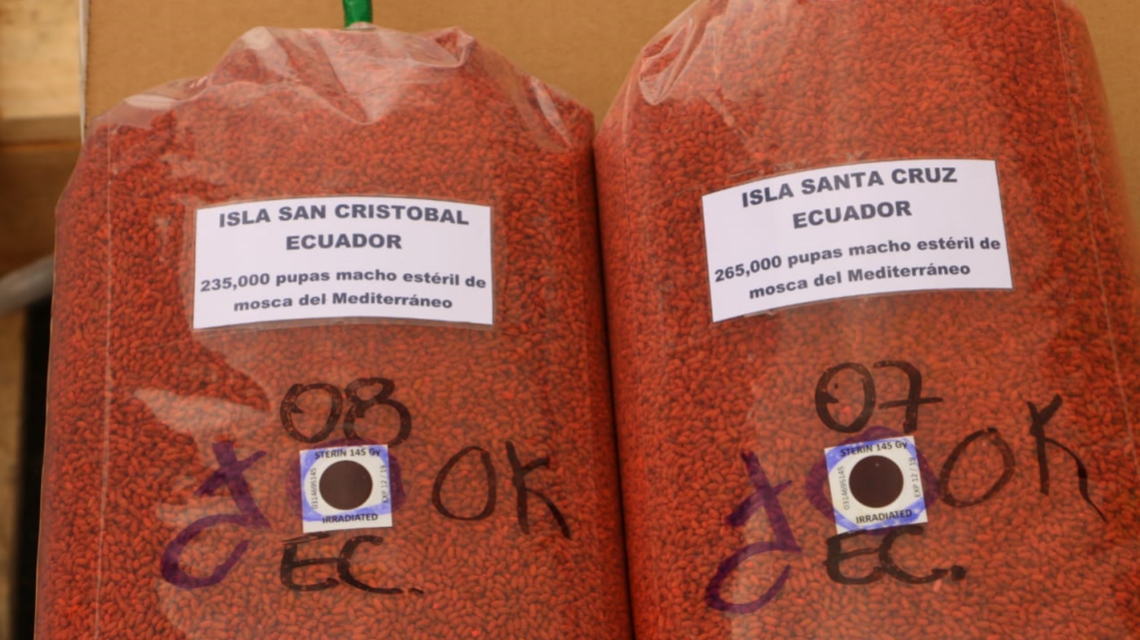Ecuador is the second largest exporter of avocados, bananas, mangos and other tropical fruits in Latin America and the Caribbean. In recent years, however, Ecuador’s Sierra region has been affected by the growing preponderance of Anastrepha fruit flies, which affect agricultural productivity by puncturing the membrane of fruits to lay eggs. When the larvae hatch the fruit is destroyed and the investments made by farmers are lost. Together with the IAEA, and in partnership with the Food and Agriculture Organization of the United Nations (FAO), Ecuador is working to resolve the threat posed by fruit flies by deploying the Sterile Insect Technique (SIT), as part of a national technical cooperation (TC) project[1] which benefits from the technical support of the Joint FAO/IAEA Division of Nuclear Techniques in Food and Agriculture.
Fruit flies not only have a direct impact on fruit production, they also affect domestic and international trade by preventing Ecuador’s fruit products from reaching foreign markets. Quarantine and importation restrictions are in place for several species of flies, many of which are native to the Sierra region.
Fruit production and fruit exports are an important priority for Ecuador and are highlighted in numerous programmes for national development. The IAEA’s technical cooperation programme has been working hand-in-hand with Ecuador’s National Secretary of Planning and Development (SEMPPLADES), since 2016, on the development and implementation of the sterile insect technique. This is a method of pest control that reduces the birth rate of fruit flies by sterilizing males with ionizing radiation, and subsequently releasing them into the environment. The sterile males then mate with wild females, but there are no offspring and the population declines.





